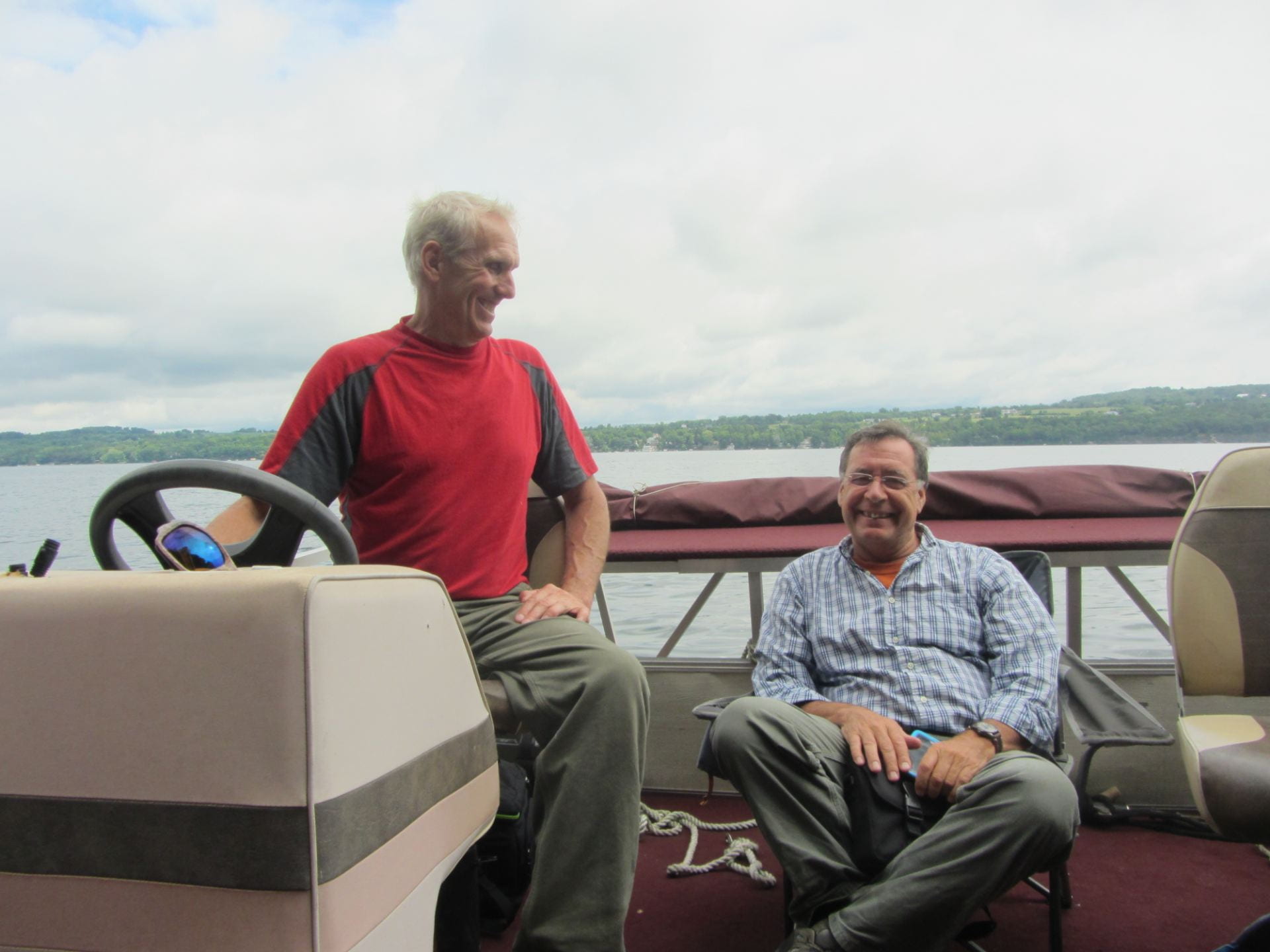The Living System
News
Looking at a hemlock in the forest, it can be easy to think that it is just another tree. However, a closer look reveals that we are wrong in that initial assumption. At any given time, each hemlock tree is home to insects, spiders, birds, mammals, lichens, fungi, and microscopic critters that each play a role in the forest ecosystem. Far from being just one living thing, the hemlock tree is an entire living system that forms the foundation of its habitat. Hemlock trees are threatened by the invasive hemlock woolly adelgid. By causing decline and death of hemlocks, HWA threatens the living system that thrives within hemlock stands in northeastern forests. When we lose a hemlock canopy, we lose not just one species but many, which irrevocably changes the landscape.
Those who manage hemlocks with HWA infestations know that there is more at stake than just the trees they treat. Bob Duckett and Tracy Yardley, the team behind Duckett’s Timber and Tree Care, both understand the risks that HWA poses not just to trees, but to all the species that depend on hemlock. Bob and Tracy helped identify some of the first HWA infestations near Skaneateles Lake during a routine tree trimming. “We didn’t really know what to do at first,” Bob recounts. “We just wanted to make it public as quick as we could. We were worried about not enough people knowing how serious it was.” HWA is now relatively widespread along the shores of Skaneateles Lake, but Bob and Tracy have played a large role in both HWA management and outreach in the area. Their work, both with their clients and with CCE Onondaga, the Skaneateles Lake Association, Finger Lakes PRISM, and the New York State Hemlock Initiative has helped get the word out and slow the spread of HWA in the area through management.

Bob Duckett (left) and NYSHI Director Mark Whitmore (right) have a laugh while surveying for HWA on Skaneateles Lake. Bob helped identify HWA infestations around the lake, as well as potential sites for NYSHI’s Laricobius beetle and Leucopis silver fly releases.
When Bob talks about hemlocks, you can tell how much love and respect he has for the important role the trees play in the forested landscape. His message connects the habitat and ecosystem services that hemlocks provide with the impact we can have if we are paying attention to the natural world around us. As partners of the New York State Hemlock Initiative, Bob and Tracy agreed to share what their work with hemlocks has meant to them over the years. Working with filmmaker Chris Foito, Bob and Tracy take us on a tour of the Bahar Preserve to learn more about hemlocks and how we can be better stewards of our forests. When it comes to taking care of or neglecting the living system, Bob notes: “We have a choice.”
The New York State Hemlock Initiative would like to thank Bob and Tracy for both their years of volunteer service with us, and their willingness to share their love for hemlocks. We would also like to thank filmmaker Chris Foito for bringing Bob and Tracy’s story to the screen.
Check out ways to get involved with hemlock conservation in your area by visiting our Community Science page.
Report HWA Findings
Stay Updated
Sign up below to receive email updates:
This form is protected by reCAPTCHA and the Google Privacy Policy and Terms of Service apply.

